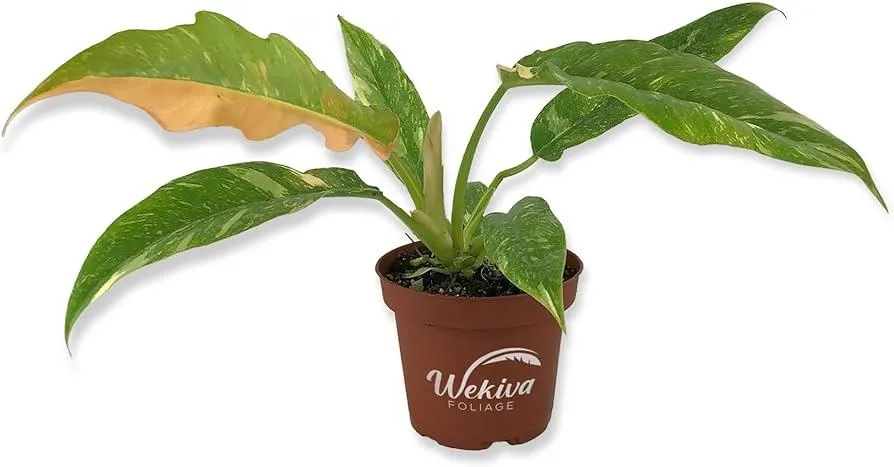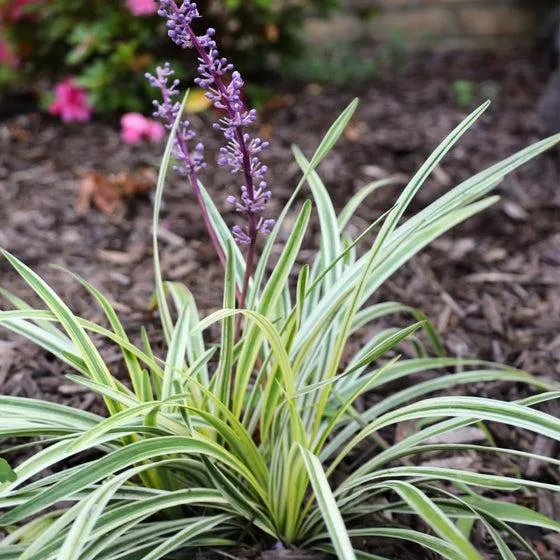Getting Started with Variegated Plants
If you’re looking to add some unique colors and patterns to your garden or home, variegated plants are a great option to consider. In this article, I’ll discuss the many benefits of variegated plants and provide tips on how to successfully grow and care for them.
What are Variegated Plants?
Variegated plants have distinctive cream, yellow, or white markings on their leaves. These markings may appear in stripes, blobs, or speckles. Variegation is caused by genetic mutations that prevent the plant’s chloroplasts from producing green pigment in certain areas. As a result, these areas remain white or pale in color.
Some common examples of variegated plants include:
- Variegated Hostas – Bright green leaves edged or splashed with creamy white
- Variegated Monsteras – Distinct cream or yellow markings on deep green leaves
- Variegated Pothos – Long trailing vines with green and white marbled leaves
- Variegated Philodendrons – Heart-shaped leaves with patches of creamy white
Benefits of Growing Variegated Plants
Variegated plants offer a number of appealing advantages:
- Unique Appearance – Their colorful patterns provide visual interest not found in solid green plants.
- Low Light Tolerance – Variegation makes them better suited to low or medium light conditions compared to all-green versions.
- Low Maintenance – Once established, variegated plants are generally low-fuss and pest/disease-resistant.
- Bring Outdoor Colors Indoors – Their eye-catching leaves can brighten up any space year-round.
From my experience caring for variegated plants, one thing that always catches people’s eye is how well their intricate patterns stand out, whether against a wall or any background.
Tips for Growing Variegated Plants Successfully
While variegated plants are fairly easy-going overall, there are a few things to keep in mind to help them thrive:
Provide Bright Indirect Light
Most variegated plants need medium to bright light to prevent the green portions from taking over. South or east-facing windows generally work best. Avoid direct midday sun, which can scorch leaves.
Pay Attention to Water Needs
When variegated plants are stressed, their variegation can fade. Be sure the soil dries out partially between waterings. Overwatering often causes more harm than underwatering.

Fertilize Regularly in Growing Season
Use a balanced all-purpose fertilizer diluted to half or quarter strength every few weeks during active growth. This provides energy for leaves to retain their markings.
Prune to Develop Bushier Forms
Pinch or trim leggy growth to encourage full, compact plants. Remove damaged or non-variegated leaves that take energy away from color areas.
Propagate by Stem or Leaf Cuttings
Taking 4-6 inch cuttings from parent plants is a simple way to grow more. Keep potted cuttings in bright light until well-rooted before transplanting.
I have personally found that light pruning and cuttings are the best ways to increase my collection of variegated beauties over time.
Common Issues to Watch For
While generally low-maintenance, variegated plants may encounter a few growing hiccups on occasion:
Reversion
Stress can sometimes cause variegation to fade as plants revert back to being all-green. Proper care helps reduce this risk.
Pests and Disease

Mealybugs or spider mites occasionally plague variegated plants. Keep foliage dry and isolate immediately if issues arise.
Leaf Burn
Too much direct sun can scorch leaf edges or spots. Move plants to a slightly shadier spot if this happens.
Leggy Growth
Without pruning, some vines or groundcovers may lose lower variegated growth. Training brings it back into view.
With watchfulness, most problems can be caught early and variegated plants will continue delighting you for years to come!
Expanding Your Collection
Once you’ve grown accustomed to variegated plant care, here are some additional varieties worth considering:
- Variegated Peperomia – Eye-catching round or heart-shaped leaves
- Variegated Spider Plant – Long straps of green and cream foliage
- Variegated Prayer Plant – Leaves that close up beautifully each evening
- Variegated Fittonia – Gorgeous red veining contrasts with cream centers
- Variegated Crassula – Chubby succulent stems flecked with white
The wonderful world of patterns never ends! Whether just starting out or an experienced grower, colorful variegated plants are sure to brighten your space.

I hope this guide has helped provide a basic understanding of these intriguing plants and tips for giving them the care they need to thrive. Let me know if you have any other questions!
Tips for Choosing Variegated Plants
| Variegation Type | Care Tips |
|---|---|
| Gold Variegation | Needs bright, indirect light. Avoid direct sun which can burn leaves. Water when top inch of soil is dry. |
| White Variegation | Prefers bright, indirect light. May need supplemental lighting in low-light conditions. Watch for brown tips which means it needs more humidity. |
| Pink Variegation | Treat like white variegation. Pink edges can fade without bright light. Keep soil consistently moist. |
| Yellow Variegation | Tolerates low light best. Water when top inch of soil is dry. May need fertilizer in spring/summer for vibrant color. |
| Half Moon Variegation | Needs bright, indirect light. May sunburn in direct sun. Keep soil evenly moist and mist leaves for extra humidity. |
FAQ
-
How can I tell if a plant will grow variegated leaves?
Basically, some plants have a natural tendency to occasionally grow variegated “sport” leaves. You’ll need to check if the specific type of plant you want sometimes naturally produces variegated foliage. At the same time, several plants can be propagated from variegated cuttings or growth to encourage more color mutations.
-
What growing conditions favor variegated growth?
Generally speaking, providing bright, direct light seems to promote more vibrant variegated coloring. However, too much sun can also cause oval leaf shapes. Perhaps the key is to find a balance between ample light and warmth. Strong, established plants also appear better able to maintain variegation long-term versus weak, straggly specimens.
-
Will variegated leaves fade over time?
It’s possible for some variegated patterns to weaken if plants receive too much or too little light. The coloring may not be as pronounced in lower, inner foliage either. Strong, healthy growth helps maintain the variegated look. You might also prune off any all-green reversions propagating to encourage more colorful breaks.
-
How do you propagate from variegated cuttings?
Removing healthy variegated stem cuttings for rooting can produce clones that preserve the unique pattern. The cuttings should have at least two sets of leaves and be taken just below a node. Use a rooting hormone and propagate under bright, warm conditions. Patiently watch for new roots and growth to begin. Soon you’ll have variegated plant babies!
What if a variegated plant suddenly reverts?
It can be kind of a bummer when a variegated plant abruptly decides to only grow green leaves. Sometimes these “reversions” might be caused by temperature, sunlight levels, or stress changing. But there’s a small chance the mutation could reappear in future growth if you treat the plant well. otherwise, you’ll need to remove any all-green stems to encourage new colorful breaks.
Is variegation harmful to a plant’s health?
For the most part, variegated foliage doesn’t dramatically impact a plant’s well-being. The coloring is usually just a quirky pigment difference that doesn’t damage tissues. However, leaves with huge white or yellow sections aren’t as efficient at photosynthesis, so growth may slow a little. So if a variegated leaf mutation seems sort of extreme, it could potentially weaken the plant long-term.
Can variegation be a sign of disease or stress?
On rare occasions, strange color patterns appearing in leaves have been linked to underlying issues like viruses, nutritional deficiencies, or environmental hardships. But these types of problems causing “false variegation” are relatively unusual. Typically, variegated mutants just result from pure pigment mutations that don’t affect the plant itself. So if growth seems healthy otherwise, the colored leaves are probably normal variations.

